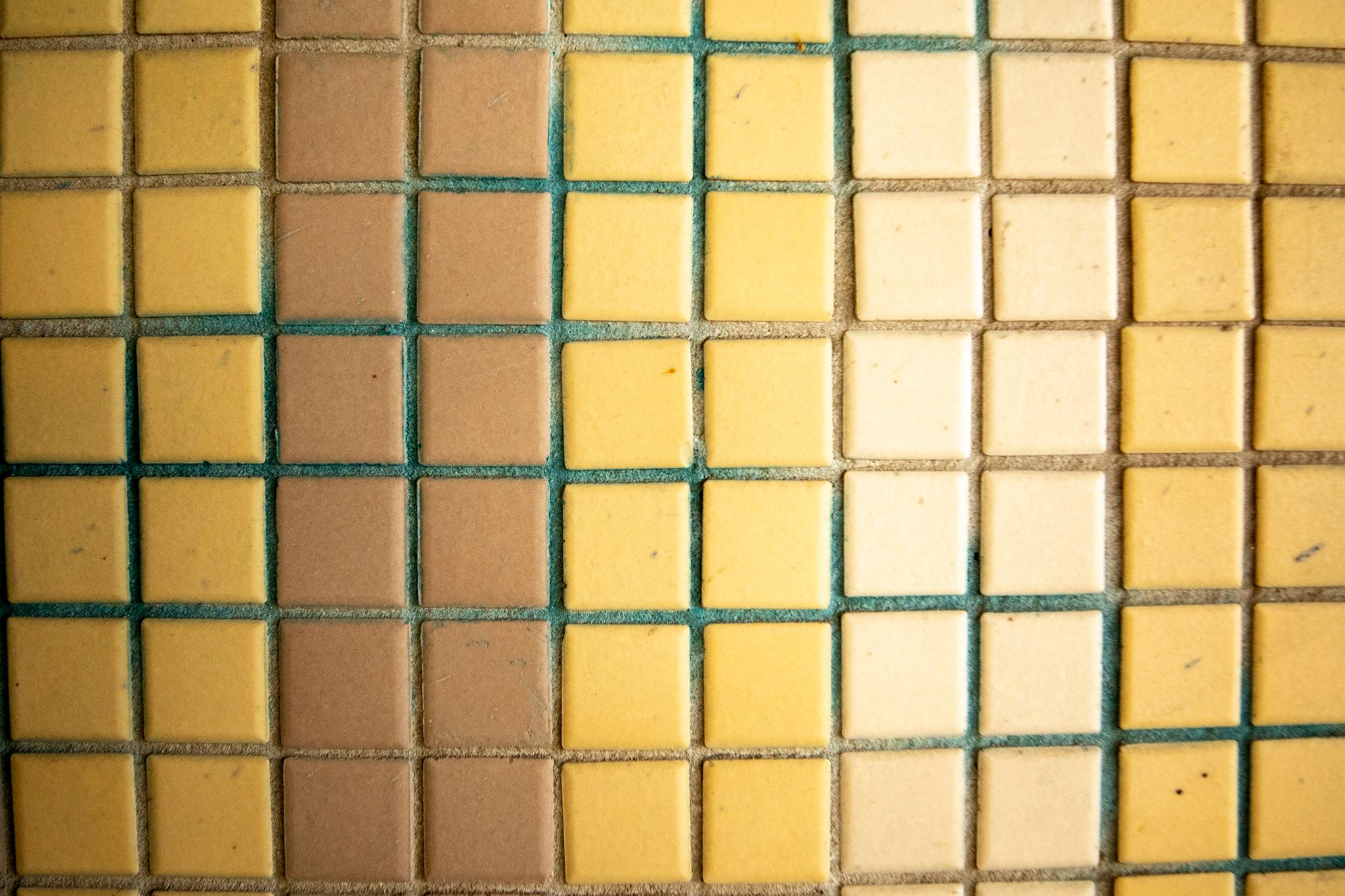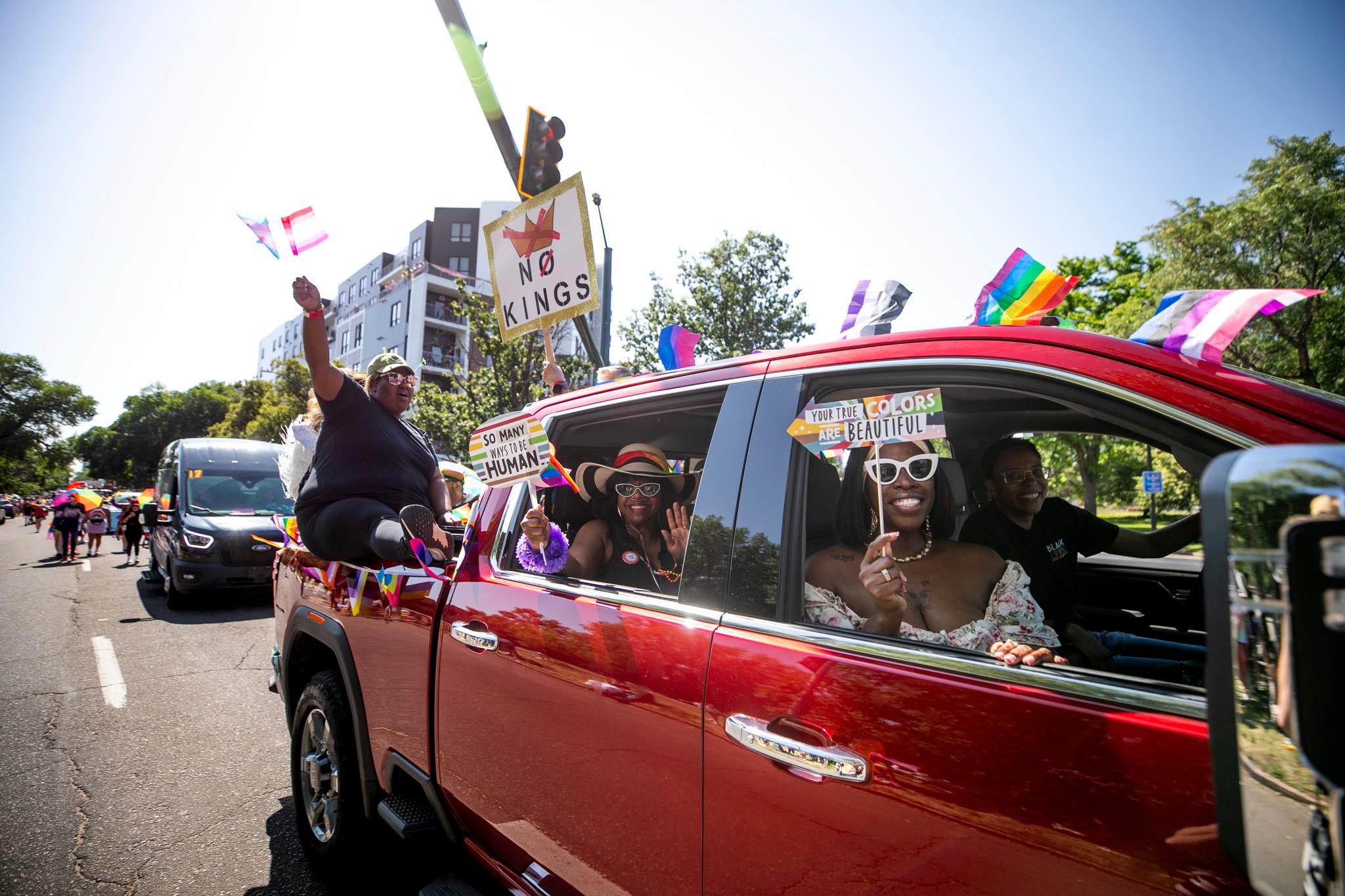A stranger in a boldly striped shirt helped create artist Barb McKee's favorite photograph of her mural.
The man whose name she never got was captured on camera as he walked past a mural panel depicting a row of dancing cowboys. The bold graphics of his shirt dance with a geometric motif that McKee, originally a textile artist, had borrowed from quilting.
"It's an image that makes me smile whenever I see it," McKee said after pulling the photograph up on her phone. "It looks like he walked out of the quilt."
"I think that's what public art does: The community begins to own it and the artist separates from it," she said. "I think that's a healthy relationship."
Healthy or not, I'm pleased to have reconnected McKee with the piece that she calls "Cowboys, Hats and Hooves." I'd been wondering who made it ever since first wandering by in 2016. I wasn't able to find out until a Denverite subscriber whose wife had worked with McKee on the project read a story about my search.
A few days after the story appeared, I met McKee at the mural under Interstate 70 just off Brighton Boulevard on 46th Street, between National Western and the Denver Coliseum. I found McKee philosophical at hearing I had not been able to reach anyone at the Colorado Department of Transportation, which had commissioned the piece completed in 2004, who remembered her name. She said she had to look through her records to come up with the names of the CDOT officials she'd worked with.

I'd been looking for her name. McKee wanted to be sure I got four others. While she designed the mural, fellow artists Robin McCarthy -- whose husband Jay McCarthy solved the mystery for me -- Marion Richardson and Donna Abbot helped McKee piece it together out of one-inch porcelain tiles. McKee also credits Steve Wilensky, then working with the engineering firm Carter & Burgess on CDOT's reconstruction of the intersections of interstates 70 and 25. McKee describes Wilensky as a champion of bringing public art into such infrastructure projects.
"None of this stuff would have gotten made if people hadn't come in to get it done," McKee said. "I come out of industry. I worked in the textile industry. I'm used to ... collaborative teamwork."
"That suits my ego," she said. "I always have trouble in galleries -- too much attention."
Her team worked section by section in the library of what had been Machebeuf Catholic High School's West Campus at 18th and Pennsylvania. The school had moved to Lowry, allowing McKee and other artists to rent space in a building that has since been demolished.
McKee remembers lugging heavy boxes of tile up a flight of stairs to the library.
The color is suffused throughout the tiles. They won't fade, but they don't have the vibrancy McKee remembers after 15 years of being bathed in dust and car exhaust. When we visited, she attacked a small section with a finger wetted by her spit, the universal solvent.
She wanted to show me the true color, "If I don't die first, licking this exhaust."

For seven months in 2003 and 2004, she and the three other artists worked in sections based on her hand-drawings, filling in her patterns with tiles. Crossing lines were a recurring motif.
"When stripes intersect each other into a square, it's reminiscent of a log cabin quilt," said McKee, who has an MFA in textile design.
"When I was in graduate school I would get a lot of criticism that my work was supposed to be big," she said, adding that something in the patterns of her textiles seemed to cry out for a large canvas.
She first got a chance to work big with another CDOT commission, the Transportation Expansion project, dubbed TREX, to rebuild Interstate 25 from Broadway to Lincoln Avenue. McKee collaborated with artist Carolyn Braaksma to bring art to some of the highway's retaining and sound walls. She researched the history of the region and placed images such as buffalo or cottonwoods where the animals or plants would have roamed or grew before the age of interstates. The resulting panels, cast out of concrete from artist carvings, were "graphic, historical descriptions," McKee said.
Research visits to the Stock Show helped her come up with the Western textile and barnyard animal motifs of the I-70 mural, which is 165 feet long and 10 feet high.
Once the sections were completed in the Machebeuf library, McKee's team trucked them to Globeville for a commercial tile company to apply to the wall under I-70.
McKee is an entrepreneur as well as an artist. Her Surface Strategy company took on public art projects across the country. She also founded Art Garage, a Park Hill art school.
She liked that the name Surface Strategy applied to everyone who helped her realize her projects. McKee shut down the company in 2016 when she needed to devote more time to her dying father. Years ago she turned Art Garage over to other managers. These days she's focusing on studio work.
Back in 2014, it did occur to her to include an identifying plaque on the mural. She said she never got around to that.
Now, she said, "I might have to approach CDOT for two things: to clean the project and get a plaque."
The plaque would not include her name, just the mural's, she said.
"And Surface Strategy. And then the date."













